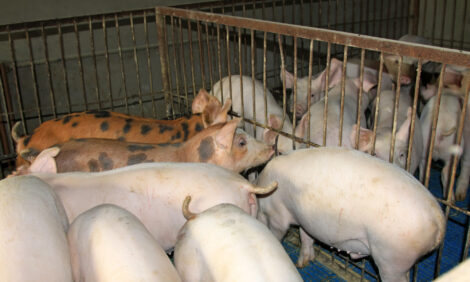



Purdue Economist Predicts Record Losses for Pork Industry
US - The nation's pork industry will continue to experience some of its worst economic losses in recent history as record-setting drought decimates feed supplies, says Purdue Extension agricultural economist, Chris Hurt.Producers could lose about $30 per head this summer and nearly $60 per head during the final quarter of the year as continued liquidation of herds drives down market hog prices and drought drives up feed prices. This exceeds the previous record quarterly losses of $45 per head in the final quarter of 1998.
In the next 12 months, losses could average $33 per head,meaning about $4 billion in losses for the US pork industry.
"A tsunami of red ink is about to wash across the pork industry, which is facing losses unseen even in the fall of 1998 when hog prices approached zero value," Mr Hurt said. "Stressors include more hogs than expected in the market, rapid sow liquidation and record feed prices."
The market anticipated a one per cent increase in slaughter numbers, but in recent weeks, slaughter has jumped by six per cent. The unexpected addition of hogs to the market has caused a more than $10 per hundredweight drop in prices since late July with prices now in the high-$50s.
A number of factors could be driving the slaughter increase, but, according to Hurt, it's likely related to the high cost of feed and a desire by producers to sell pigs before market prices tumble even further.
Based on current lean hog futures, prices for the final quarter this year are predicted to fall to the mid-$50s per hundred weight. But the cost associated with raising hogs continues to rise.
"Tragically, costs of production are expected to be above $75 per live hundredweight for the remainder of this summer, fall and winter," Mr Hurt said.
Mr Hurt referred to it as a "short-term carnage"and said he expects losses to continue through the winter but for the industry to return to near the break-even point by late spring. He expected losses near $38 per head in the first quarter of 2013, but by the second quarter those should fall to $5 per head.
The first wave of national hog breeding herd reduction began in early August and has continued to intensify. Slaughter data show that in August alone nearly 30,000 sows were sent to market. That's a reduction of about 0.6 per cent of the national sow herd in just one month. That rate will continue to increase if corn prices stay at current levels or move higher. Mr Hurt said the breeding herd could decline four per cent to six per cent from now until January, but sow liquidation should slow sharply after the winter.
In the short term, however, hog producers should focus on cost-saving management for market hogs.
"The dilemma for the industry is that enormous losses are going to occur for pigs that are already born," Mr Hurt said. "Short of euthanising young pigs, reduction of market weights could be a viable option for the industry. The weight reductions would reduce total pork supplies, useless feed and enhance hog prices."
President Barack Obama authorised the government to buy a small portion of the nation's pork supply, but Hurt doesn't think it will be enough to significantly change falling prices.
"The volume of pork the government will purchase is so small it will reduce the losses by less than $1 per head," he said.







